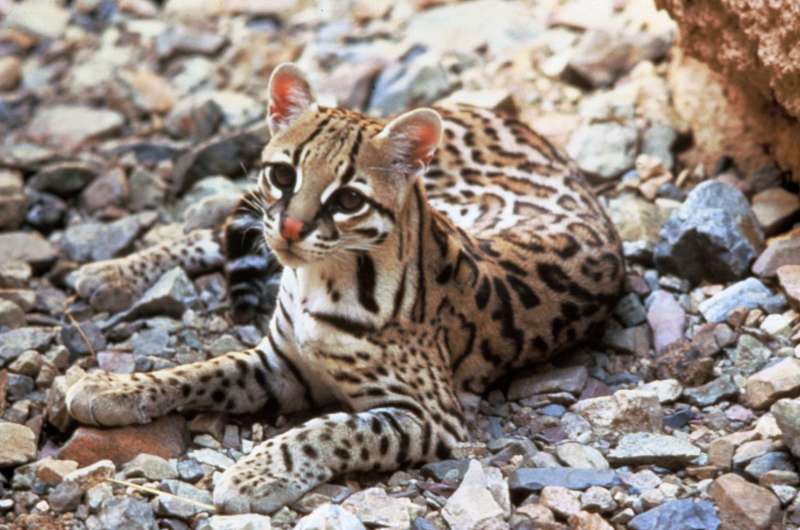Neotropical spotted cats may appear more frequently near protected areas. Credit: Tom Smylie, US Fish & Wildlife Service
Neotropical spotted cats may occur more near protected areas, according to a study published January 4, 2017 in the open-access journal PLOS ONE by Mariana B. Nagy-Reis from the Universidade Estadual de Campinas (UNICAMP), Campinas, São Paulo, Brazil, and colleagues.
Small wild cats, which affect prey and therefore plant populations, play an important role in ecosystem dynamics. Although many of these species are threatened, there is little research available on how they co-exist in various habitats and where they are most likely to occur.
To understand how multiple small wild cat species can live within the same space, Nagy-Reis and colleagues studied three morphologically similar, closely-related Neotropical spotted cat species - ocelots (Leopardus pardalis), margays (L. wiedii), and oncillas (L. guttulus). The authors of the present study used camera trapping and sampling of droppings to gather distribution data for these species in a large protected area of the Atlantic forest. They used occupancy modelling to investigate whether the species co-occurred less frequently than would be expected by chance, considering that the species might have habitat preferences and that competition between other predator species has been shown often to influence their distribution.
The authors found that proximity to the nature reserve (a more protected area within the forest) seemed to be the most important driver of Neotropical spotted cats' occurrence. Interactions between species and landscape characteristics seemed to make less difference in determining the areas they occupied. While the entire area in this study is under some type of protection, the species' particular attraction to the nature reserve suggests that small wild cats can be very sensitive to the protection status of the area. The authors suggest that their findings emphasize the importance of maintaining and creating reserves and other areas with elevated protection to properly manage and conserve the species.
Dr Nagy-Reis summarizes: "Proximity to areas with elevated protection (e.g., nature reserves) can be a more important driver of Neotropical spotted cats' occurrence than interspecific interactions or environmental landscape characteristics."
More information: Nagy-Reis MB, Nichols JD, Chiarello AG, Ribeiro MC, Setz EZF (2017) Landscape Use and Co-Occurrence Patterns of Neotropical Spotted Cats. PLoS ONE 12(1): e0168441. DOI: 10.1371/journal.pone.0168441
Journal information: PLoS ONE
Provided by Public Library of Science






















